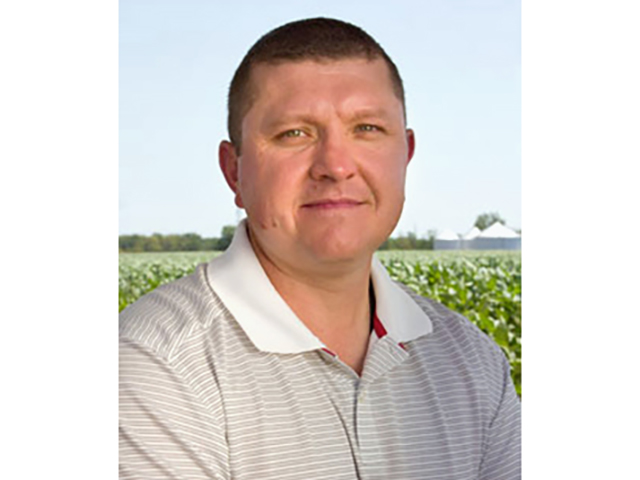Ask The Agronomist
Ask the Agronomist - Calculate N Rates For 2021 Corn Success
ADVERTORIAL
Optimizing returns on every dollar spent on fertilizer and crop nutrition holds the key to profitable crop production. Ask The Agronomist, brought to you by Nutrien's eKonomics, provides crucial nutrient management answers as you prepare for the 2021 growing season.
Q: Is there a rethinking by Midwest farmers regarding nitrogen use on corn?
Robert Mullen: We see a trend toward less fall fertilizer. Not necessarily fewer acres of fall anhydrous, but rather a rate reduction per acre. In areas where this occurs, we see a transition to split nitrogen application, applying the rest of the nitrogen (N) budget in spring -- either preplant and/or sidedress. Then there are areas like Ohio with little fall application due to excessive drainage, wet fall and spring weather, and warm winter spells that convert anhydrous to nitrate that can leave the field.
In an idealistic system, the ultimate nitrogen amount is determined by three things -- crop demand, dictated by achievable yield; nitrogen availability in the soil; and nitrogen loss, dictated by rainfall and soil drainage. The reality is we don't know achievable yield in the spring. We don't have reliable nitrogen mineralization prediction. And we don't have a reliable method to measure/predict nitrogen lost from the system. Different models exist, but how robust are they? The biggest challenge we have is the inability to predict the weather accurately.
P[L1] D[0x0] M[300x250] OOP[F] ADUNIT[] T[]
Q: How can the Maximum Return to Nitrogen (MRTN) database help farmers improve N rates?
Mullen: Numerous universities employ the MRTN approach to N recommendations, which relies on an average response to nitrogen, determined by actual field research. From that response, an economic recommendation is developed. On average, MRTN does a good job of providing nitrogen rate guidelines, but it's not perfect. For example, an Ohio study of over 228 field experiments using MRTN rates found that this database-driven model over-recommended nitrogen 40% of the time and under-recommended N 30% of the time.
I encourage farmers to examine how their average N rate compares to their state's MRTN rate or regular average recommended rate. Suppose you're 20 to 25 pounds per acre higher. In that case, I suggest conducting a simple rate test in an area of various fields by dropping the rate 20 pounds per acre for several years to observe yield trends, given all the variabilities that exist.
Q: What other critical evaluations should be examined to improve N efficiency?
Mullen: First, using a nitrogen additive (urease inhibitor or nitrification inhibitor) or a polymer-coated product or an enhanced efficiency fertilizer (EEF) can decrease the overall application rate, if it addresses a specific loss pathway. Secondly, look at slightly altering your timing and/or placement to change the N rate. Theoretically, sidedress is an improvement over preplant applications, as it can be advantageous in certain environments -- just as starter fertilizer can add efficiency, too.
Q: How important are sensors and other tools to help refine in-season nitrogen use?
Mullen: I spent research time in my academic career at Ohio State University evaluating sensor performance and algorithm development. For all the promises they offer, there are some real challenges to their adoption and use.
Model-based approaches also offer some promise to improved nitrogen management by predicting crop nitrogen requirement while estimating specific nitrogen loss mechanisms. From my experience, there is typically some degree of regionality to these approaches (especially when it comes to predicting soil loss mechanisms), so accuracy in one area isn't always replicated in other areas. Hopefully, as we capture more data over time with these model-based approaches, they will prove to provide better recommendations than we currently employ.
Q: When will we reach the holy grail of N rate perfection?
Mullen: In my humble opinion, we're not going to find a magic bullet that's going to solve all our nitrogen challenges in the short-term. The 4Rs of nutrient stewardship is a fairly simplistic concept (right source, right rate, right time and right place), but putting it into practice is not as simple because they are all interrelated. If you change one, it impacts all the others. If I change the rate, do I consider different placement options? It comes down to farmers -- and advisors -- to capture enough knowledge about the system to recognize where opportunities exist to make improvements.
For More Information:
Visit Nutrien-eKonomics.com for news and fertility management information. It also contains valuable tools like a rainfall tracker and Growing Degree Day calculator to help farmers assess possible fertility loss and plant development needs.
[PF_0121]
(c) Copyright 2021 DTN, LLC. All rights reserved.




